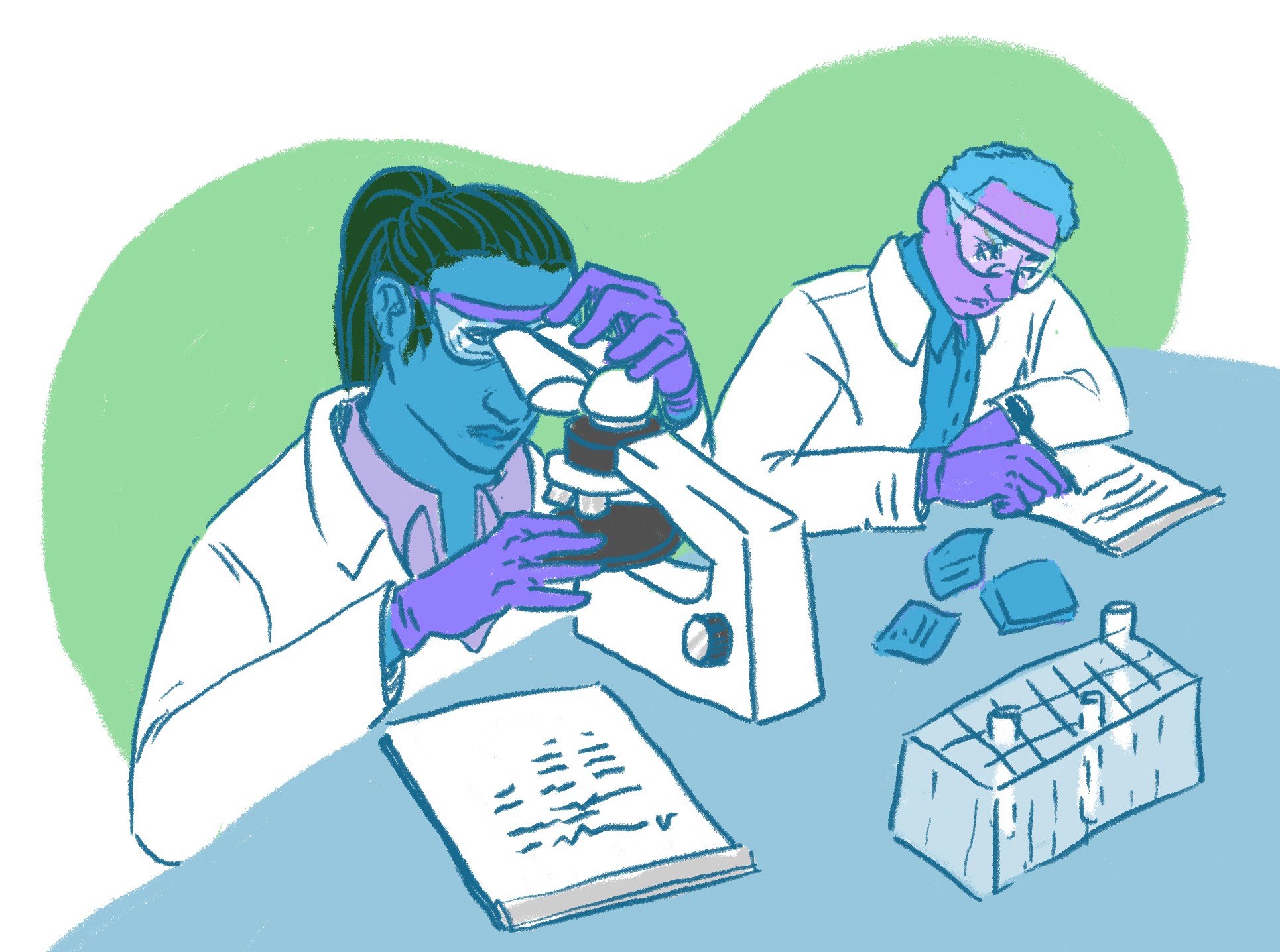Research produced by the Wardill Lab at the University of Minnesota has scientifically advancing results on how cephalopods hunt and use vision, which has broader impacts for ocean health and marine animal adaptations to climate change.
Trevor Wardill created the lab when he came to the University to further his research interests with cephalopods, which include squids, cuttlefish and octopus, to further our understanding of marine animal adaptations over time. The lab facilitates research and educational opportunities for both undergraduate and graduate level students.
The lab’s focus is to look at “how animals see the world and then use that information to coordinate behavior … which includes prey capture,” said Wardill, assistant professor in ecology, evolution and behavior.
In one ongoing research study, they are looking at cephalopod vision in a new way: with cuttlefish wearing 3D glasses.
“I am interested in vision and color, but as it turns out, cephalopods don’t have color vision at all, although they produce iridescence in their skin with amazing coloration,” Wardill said. “To me it’s kind of this weird enigma of how do they not see color and yet put all these cool displays on?”
Wardill said the study was inspired by an older paper that suggested cuttlefish did not detect distance based on the vision in both eyes in addition to not having depth perception.
“For me, as a vision scientist, that didn’t make a lot of sense,” Wardill said, “I was pretty certain they have perception in that somehow.”
There was another study that put colored glasses on mantis species to create a 3D cinema, and Wardill thought they should try that on a cuttlefish.
“A cuttlefish wearing shades and swimming around a tank is pretty cool,” Wardill said.
Although this study was previously done on insects, it had never been done in the water, let alone on a marine organism.
“Almost immediately, people were like ‘you’re mad like there’s no way this is gonna work,’” Wardill said. “It was a little far-fetched, but with a bit of ingenuity and persistence, we figured out that we could attach small glasses to the head of cuttlefish using super glue.”
Wardill said they then trained the cuttlefish to attack a monitor on the side of the tank so they could test whether cuttlefish perception uses differences in the left and right eye to calculate depth.
The research of the Wardill Lab has brought many graduate students in to participate in the cephalopod research, while also adding in their own ideas.
James Peyla, a doctoral student in the Wardill Lab, plans to study how cephalopods, specifically cuttlefish, develop their ability to capture many types of prey through examination of social and instinctual methods of learning.
“My question is, how do they arrive at that ability [to capture prey]? Is it instinct? Do they just come out of the egg knowing how to take down all the prey? Do they learn it through trial and error, or even through watching each other?” Peyla said.
Cuttlefish are more solitary animals, but they definitely watch each other when they are feeding, Peyla said.
Another doctoral student in the Wardill Lab, Rachael Kaspar, studies bobtail squid camouflage and prey capture.
“What’s really special about them is that they have a light organ that is able to help camouflage them at night when they’re swimming in the water column,” Kaspar said. “I am interested in how they use their light organ and also how they are able to remember and learn to catch prey,” Kasper said.
These natural mechanisms and behaviors are altered based on environmental factors and therefore, bobtail squid can be used as an indicator for how well marine ecosystems adapt to stressors such as climate change or plastic pollution, Kaspar said.
Wardill Lab’s advanced research has led to five separate features in the New York Times, including the most recent in September.
On Sept. 20, the New York Times featured the lab for completed research on the hunting mechanism of octopuses.
“We wanted to look at arm control in octopuses and see whether there were any rules they use to deploy their arms in capturing prey,” Wardill said. “The big highlight was that they use vision for prey capture.”
They also discovered octopuses adapt their method of hunting for the type of prey they are after, said Natalie Bennett, a doctoral student in the Wardill Lab studying biomedical informatics and computational biology (BICB), who also worked on the paper.
Additionally, Bennett said the octopuses had a preference for which limbs they liked to hunt with, choosing one of the eight and right or left.
“You’d think that they’d use their first arm because it’s the one on the front … we found that they usually use the second arm,” Bennett said. “It’s super cool to see yourself in the New York Times for something…nerdy.”
Kaspar said the ability to connect with others about science through the media is a huge way to communicate cool ideas and help the public learn.
“Whenever we get that kind of attention, it makes us feel great too,” Kasper said.
The Wardill Lab has brought important scientific recognition to the University and the department of ecology, evolution and behavior.
“The Wardill research team is pushing boundaries in behavioral science, showing the way on how to understand the diversity of life,” Micheal Travisano, ecology, evolution and behavior department head, said in an email to the Minnesota Daily. “Their research demonstrates the amazing adaptations of cephalopods, giving us a better perspective of our own abilities.”
As graduate students can begin their research again after the pandemic, the Wardill lab will start to learn more about cephalopods’ predation and vision to watch out for in future studies.



























